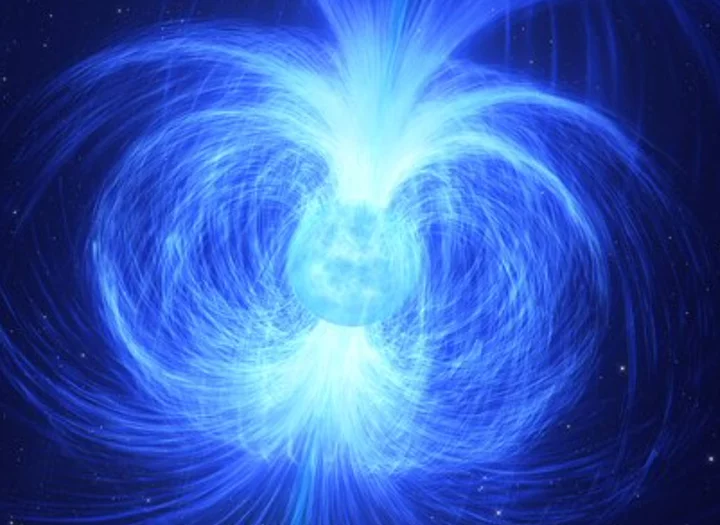Astronomers have been studying a weird old star in deep space that is alive — but just barely.
The beguiling star in the HD 45166 system is known as a Wolf-Rayet, in the midst of a rare and brief phase that makes it burn hotter and generate powerful gas winds right before it explodes in a supernova.
But why would such a light star — that is, one only about four times the mass of the sun — behave like a Wolf-Rayet, which is often exceedingly more massive? What's more, the star isn't nearly as luminous as others in its class and has funky, unexpected ingredients, like nitrogen, oxygen, and carbon.
Astrophysicists Tomer Shenar and Julia Bodensteiner began calling it the Zombie Star, not because it's almost dead, but because it became Shenar's obsession, turning him into a zombified stargazer as he tried to solve the mystery.
"It has certainly kept me awake at night," Shenar told Mashable. "The star was a riddle to me, and my colleagues had to suffer my repeated mentions of this object."
SEE ALSO: Spectacular Webb telescope image shows a stellar death like never beforeThe team concluded the star is likely an oddball because it's on the verge of becoming a magnetar, the most magnetic thing in the universe.
The star, located about 3,000 light-years from Earth with a companion star in the constellation Monoceros, turns out to be the most magnetic massive living star ever found. The new findings, published in the journal Science, present the Zombie Star as a new type of astronomical object that may explain the origin of magnetars, tightly packed stellar corpses with mighty magnetic fields. Up until now, how they form has eluded experts.
The discovery happened after Shenar had an epiphany: What if it's magnetic?
The James Webb Space Telescope captures a Wolf-Rayet star on the brink of a supernova explosion. Credit: NASA / ESA / CSA / STScI / Webb ERO Production Team "The star was a riddle to me."The team studied it with the Canada-France-Hawaii Telescope that can detect and measure magnetic fields. They learned the star is extremely magnetic, at 43,000 gauss. For a reference point, Earth's magnetic field — invisible forces that help compasses operate and birds navigate — is 0.5 gauss. The entire surface of the Zombie Star has a magnetic field almost 100,000 times stronger than Earth's, said co-author Pablo Marchant, an astronomer at KU Leuven’s Institute of Astronomy in Belgium, in a statement.
Want more science and tech news delivered straight to your inbox? Sign up for Mashable's Light Speed newsletter today.
"I don't know how it would feel for a human being, but I doubt it would feel nice," Shenar, the lead author, said in an email. "I guess the iron in our blood would get pulled to our heads (or legs)."
When the Zombie Star sheds solar material, it can't escape because of the magnetic fields, trapped in arches that collide at the magnetic equator, says Shenar, who is based at the Centre for Astrobiology in Spain. In fact, most of the light astronomers can see from the star is actually coming from this captured shell of material.
Shenar used to work at KU Leuven’s Institute of Astronomy, where researchers have access to the Mercator telescope in the Canary Islands. He would often beg his colleagues for a favor to sneak in another "spectrum" of the Zombie Star, a chart of starlight data that tells astronomers about a star's makeup.
The team calculates that the star will end its life as a magnetar, a special breed of neutron star with an extremely powerful magnetic field. While some supernovas result in a new black hole, others form dense neutron stars when the core of a massive star collapses.
A graphic of magnetic field lines rising from a magnetar. Credit: Robert Mallozzi / University of Alabama in Huntsville illustrationDuring the collapse, its magnetic strength will crescendo, the team suggests, eventually becoming a dead core with a magnetic field of about 100 trillion gauss.
In hindsight, Shenar believes his obsessive thoughts about HD 45166 and nagging were worth it, uncovering an important piece of the puzzle about magnetars. Fortunately, he reports that he has suffered no other zombifying symptoms, like feeding on hapless undergrads.
"I'm a vegetarian, so no," he said.









